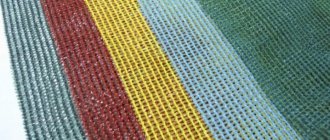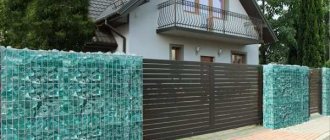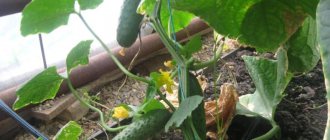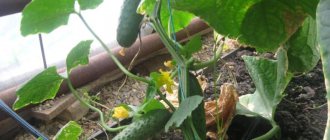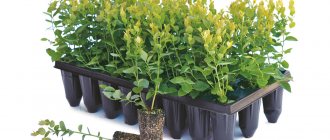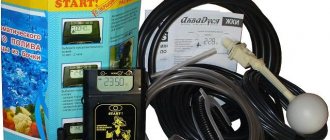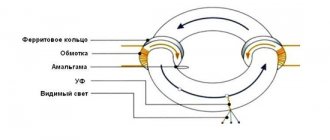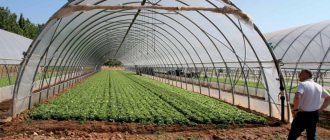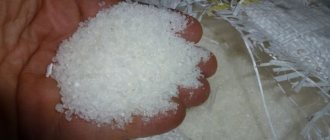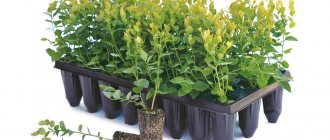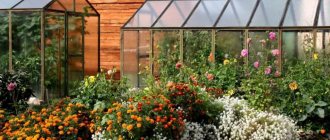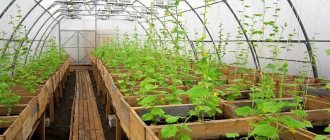Shading mesh is a lightweight, environmentally friendly material designed to protect from sunlight. It is no secret that global warming is making changes to the development of agriculture. In our country, every year, the average temperature in summer rises, the number of sunny days increases, therefore, the amount of ultraviolet radiation increases, which has a detrimental effect on agriculture and on humans in general. But a method of combating this phenomenon in the world has long been invented, and it is very effective! Shading mesh is very popular in Europe and all over the world, with the help of which you can solve a huge number of problems associated with ultraviolet radiation and more. This article will help you understand the types of grids and choose the right one for your purposes and needs. Let's figure out what a shading net is and what it is used with? The mesh is made from a synthetic, environmentally friendly material that can dissipate and absorb ultraviolet radiation, which is so abundant in sunlight. If you look at the structure of the mesh, it is essentially a single fiber, with many weaves that are evenly spaced from each other, with a large number of slots. The degree of shading of the grid directly depends on the number of these slots, we will call them cells. Shading mesh can be divided into areas of application: Mesh for camouflage purposes. It has a high density and will help you in camouflaging construction sites in order to hide construction debris, the unpleasant appearance of walls during repairs, scaffolding, etc. from prying eyes. It is also suitable for the construction of fences and canopies, since it has a lower degree of enlightenment.
Frame for shading mesh. Application of shading cloth on open ground
External influences of the level of light, heat, and humidity can have both positive and negative effects on seed germination, plant development and productivity. To obtain a high level of productivity of territories, plants require not only protection from excessive solar aggression, but also regulation of the supply of light fluxes. The amount of light received by crops must be sufficient for the photosynthetic cycle. Violation of the process guarantees that plants do not receive all nutrients from the soil and air, poor growth, low yields and death of crops.
A shading net for open ground, installed on frames, protects plantings from damage by hail or heavy winds. The material ensures the maintenance of constant temperatures, protection from morning frosts and excessive solar activity. The cellular fabric guarantees a free flow of air to the bushes, which protects the plants from overheating and reduces the possibility of damage to fruits and seedlings by putrefactive bacteria.
A correctly selected degree of shading ensures the creation of a favorable microclimate that promotes the simultaneous development of plants and ripening of the crop, reduces the level of moisture evaporation, and reduces the frequency of watering.
When planning your first use of the mesh, do not forget to take into account the changed requirements for planting density.
Overview of species
Choosing a grid seems like a fairly simple task, but to get the most out of your shading, you need to pay attention to every little detail. It is necessary to choose the right color, density and cellularity of the fabric for different needs. The mesh for a greenhouse will be very different from the mesh for open ground. The mesh is produced in a variety of sizes: from 2x20 to 5x50 meters. And this is not the limit either - if necessary, you can find a shading mesh that exceeds the standard parameters.
Shading nets are classified according to three main criteria: density, color and purpose. Let's look at each type in more detail.
By density
The degree of protection of plants from ultraviolet radiation depends on the density of the weave - the level of shading can vary from 40 to 95 percent.
Therefore, it is worth studying the characteristics of each level of weave density before proceeding with the installation of awnings.
The largest cells in the mesh allow enough sunlight to pass through for light-loving crops such as cucumbers. A shade with a shading density of 40-45 percent will well protect the soil from drying out and increase the yield by 10-15%
For cucumbers, it is very important to keep the soil moist, because this is an important factor in the taste of the fruit. The smartest choice for tomatoes is a shade cloth with a shade level of 55 to 60 percent. Also, the covering mesh is well suited for protecting strawberries and greens from the heat, and for tomatoes it will be a reliable protection against elevated temperatures, because their fruits are very sensitive to direct sunlight. Shading mesh with a light transmission level of 70-80 percent is best suited for stretching over greenhouses from the outside
This way the shoots will receive enough light and will not be damaged during frosts. The protective shade mesh can also be used as a carport or fence - for such cases, the densest mesh is used, filtering out 85-90 percent of the light. This degree of light penetration is not suitable for protecting cultivated plants, so this canvas should not be used for the garden.
By color
Manufacturers offer a wide selection of shade net colors. In demand:
- white;
- beige;
- classic green;
- black;
- red;
- gray
Moreover, each color has its own useful qualities. For example, gray mesh protects young shoots from the cold better than others - it would be wise to use it for greenhouses.
And to increase yield and improve the quality of fruits, they use red shade, which also prevents the appearance of harmful microorganisms.
By application
The production of shadow nets is focused on various consumer needs, which is why such products can be classified depending on the method of potential application. For example, a fairly dense garden net stretched under a fruit tree can prevent the fruit from falling to the ground. This preserves the neat appearance of the crop and extends its shelf life.
Of course, first of all, the shading net is created to cover agricultural crops. In addition to vegetable gardens and greenhouses, you can use it as a canopy.
In this case, a mesh screen with eyelets is a good choice - it will be convenient to stretch it between the beams of scaffolding and easy to remove after completion of the work.
DIY frame for shading mesh. Description
The basis of the frame is made up of rack-holders for furniture pipes with a diameter of 25 mm of the Joker system. Specifically, an adjustable holder with threads on the ring and inside the base and a reinforced holder. Sections of HDPE pipe with a diameter of 25 mm were used as load-bearing elements, which will be threaded through the rings of the frame posts supporting the pipe. To make it easier to attach the mesh at the top and bottom, the ends of the vertical pipes are connected to each other with pipe sections using fittings. A shading mesh is stretched over the resulting frame and secured to it with special homemade clips.
Tips for choosing shading material
To successfully choose a garden net for yourself, you need to listen to a few simple and useful tips. Indeed, when choosing such a material, you need to take into account many factors, such as the purposes for which the mesh is intended, plant varieties, and climate characteristics.
- The cell size of the shading mesh has a huge impact on the development of plants. The larger they are, the greater the amount of heat and sunlight the material will transmit. Thus, for growing celery, cabbage, dill, lettuce and various crops with large, dense leaves, experts strongly recommend giving preference to nets with small cells, which will create good shade. After all, these types of plants are considered not only shade-tolerant, but also develop much better in the shade than in the sun.
- It must be remembered that the more sunlight hits the material over a long period of time, the better quality the material must be purchased. After all, colored fabric mesh will fade very quickly, causing it to quickly lose its basic properties. Therefore, for permanent use in a sunny place, it is best to give preference to meshes made of polymers or polycarbonate.
- To protect verandas, balconies, parking lots and gazebos from the sun, you should choose a network that is better suited for its decorative properties. And, of course, preference should be given to materials that can at least partially protect the space not only from the scorching sun, but also from precipitation.
The choice of shading mesh is an important matter. Therefore, it is better to spend a little time and study all the properties of materials and their features, listen to the advice of experienced specialists
Then in the future you will not have to regret that the shading grid does not fully perform its functions. Whatever material you choose, be sure to study the intricacies of its installation. Otherwise, it will not be possible to avoid damage to the mesh during the process of stretching it.
DIY shade net. Do-it-yourself shading mesh for the vegetable garden
For greenhouse owners and other gardeners, with the onset of spring, the question of shading plants from the sun arises. For this purpose, a shading mesh is used. It is designed to protect not only greenhouse plants, but also crops in open ground from the sun. Manufacturers produce meshes of various sizes and with different cell sizes.
In addition to greenhouses and garden plants, it can also be used on the farm, for example, in canopies, awnings and even as a fence. The material from which it is made is synthetic, so it is strong and durable.
You can choose a product width from 2 to 16 meters; in addition, they are produced with varying degrees of shading from 30% to 80%. Nets with light and medium shading are used to cover light-loving crops, and with strong shading, they are used to cover fences and gazebos.
What is Shading Mesh
In gardening and gardening stores you can almost always find so-called shading nets. Their use allows you to reduce the intensity of sunlight, but at the same time do not interfere with the free access of air and do not accumulate excess heat. The nets are made from dense synthetic threads, so they do not tear and, despite their elasticity, keep their shape well.
The shading mechanism in the case of nets is not to cover the greenhouse or crops. It comes down to the reflection and dispersion of sunlight. Accordingly, plants continue to receive the level of lighting necessary for growth, but do not overheat. In addition, moisture evaporates more slowly, and the frequency of watering is somewhat reduced.
Functions of a shading net in a vegetable garden
Since the material is made from synthetic material, it is very practical. The product is not afraid of sunlight, does not lose color, does not melt and is resistant to rain and hail.
Application for protection from the scorching sun, thereby preventing overheating of crops and the appearance of burns on them. To shade the greenhouse, you need to stretch the mesh over the structure and secure it. Thanks to this product, the temperature in the greenhouse will drop by 5-10 degrees. Thanks to the cellular structure, light penetrates evenly through it.
Protection from birds and bad weather. The use of a shading net stretched over plants in open ground prevents damage to fruits by birds, and during hail and strong winds it protects plants and crops.
In addition, if you stretch it over a rigid frame, you will get a kind of protective awning, under which the plants will be protected from the bright sun and other negative factors.
Pros and cons when using
- Shading mesh has many advantages:
- wide scope of application;
- usually made of durable materials, therefore, durable;
- It is easy to work with, even one person can handle it;
- protects from the harmful effects of environmental factors (sun protection properties, protection from insects and birds);
- does not rot;
- not subject to corrosion.
Important! The shade net can be left in place over the winter
—
she is not afraid of snow and humidity. On the contrary, the surface covered with it is more likely to be free of snow.
- However, there are a number of disadvantages:
- you need to buy only high-quality materials, which can be expensive;
- if a colored coating is used, then over time it will fade in the sun and may lose its quality;
- It can be damaged during installation, so you need to carefully read the instructions.
How to choose a shade net for your garden
If you have the desire and time, you can make a protective net yourself. To do this, you need to purchase dark nylon threads and weave it by hand. But doing it yourself takes a very long time, so in this case it is better to purchase it ready-made in a specialized store.
In order for the shading net to be beneficial, it must be chosen correctly. The choice of the required product is based on three parameters - color, degree of protection and purpose.
Color selection
Shade netting comes in several colors, and each color has an effect on the plants. The red product promotes the formation of larger fruits, increases the speed of flowering and reduces the likelihood of diseases.
Gray color promotes the appearance of friendly shoots, increases the number of shoots and increases the growth rate. The blue-green material helps create more favorable climatic conditions and protect plants from exposure to ultraviolet radiation. In addition, this color promotes earlier ripening of fruits.
Shading degree
The mesh with 45% shading allows a large amount of light to pass through and is suitable for protecting cucumbers and melons.
A denser product with 60% shading will save crops from extreme heat. Used for planting tomatoes, eggplants and cabbage.
70% shading is suitable for covering the outside of greenhouses. At the same time, it transmits the required amount of sunlight and protects plants from overheating.
80% shading is used for hedges and fences, car shelter. The material creates a good shadow.
Shading 90%. Such products are not used for plants, as they are too dense and practically do not transmit light. This mesh is suitable for equipping gazebos, summer areas, and so on.
Purpose of the product
Shading mesh is produced for use on cucumbers, tomatoes, for greenhouses, fences and camouflage.
A tomato net can significantly increase the amount of harvest and protect seedlings from withering.
The net for cucumbers has a shading degree of 45% and allows you to save the plants from drying out.
The camouflage net is not used in the garden; it is intended to cover and camouflage secret objects.
Products for a greenhouse can have different degrees of shading, this will depend on how it will be installed. If it is placed inside the greenhouse, then you need to choose a small degree of shading, and if outside, then the shading should be 70-80%.
Fence mesh allows you to quickly build a fence; for these purposes it is best to choose a material with a level of 90%.
Before purchasing a shading net, it is necessary to clearly determine the location of its placement, the level of illumination of the area and the size of the shelter. In order for it to last for more than one season, it must be removed after harvesting and stored in a cool place, such as a cellar.
How to install
You can involve craftsmen in the installation, but every gardener who wants to can do it on their own. The main thing is to read the instructions included in the kit. The installation method depends on the type of structure that needs to be shaded.
To the greenhouse
The shade net is stretched over the roof of the greenhouse over the main covering. This use is popular not only in summer cottages, but also in industrial structures. At the edges you can find holes for tension fasteners. If they are not there, then the fasteners can be replaced with wire or thread.
Did you know? There is also a camouflage type of mesh with a density of 90%. It allows you to hide construction objects and can make a person on the ground invisible from a distance of 20 steps.
You can also use for fastening:
- clips (disposable and reusable);
- different screeds;
- construction gun;
- sewing fabrics together.
Video: how to install a sun protection net on a greenhouse
As a canopy
To begin installation, a supporting structure or frame is required. If you don’t have one, you can create it yourself from beams, pipes and other available materials. Next, the covering is stretched over the structure and secured with ties or cables.
The most important thing is to securely fasten the supporting elements of the structure, since the mesh falling is not dangerous, it is extremely light, but the beams can cause harm. Also, do not be afraid of the wind; due to its structure, it does not have windage.
After reading this article, you will be able to decide on the type of shade net you need and install it yourself, whether it be in a greenhouse or a canopy.
Classification of meshes: by application, by density and color
Meshes vary depending on application, degree of UV protection and color.
Camouflage camouflage nets with a maximum level of shading allow you to hide objects from prying eyes.
Shading nets for tomatoes are designed to increase productivity and protect seedlings from premature wilting. The average shading value is about 60-70%.
Shading cucumber nets prevent the soil and plants from drying out, and also help increase productivity by an average of 10-15%.
The most ideal option is a grid with a shading value of 45%.
Greenhouse shading nets for outdoor and indoor use to improve the greenhouse effect. Outside, protection from excessive ultraviolet radiation is provided by shading within 70-80%.
Shading nets for fences and fencing are available in models with shading rates of 80-90%, and the most modern canvases are capable of retaining precipitation.
Depending on the level of UV protection, modern nets can have a shading effect ranging from 45-90%. The lightest models transmit a fairly large amount of sunlight, so they cannot be used when growing the most sun-loving crops, including watermelon, melon and cucumbers. Thicker options are suitable for protecting peppers, tomatoes, cabbage and eggplant. Maximum sun protection is used when arranging fences, fences, and has also proven itself when creating recreation areas.
Red shading nets increase yields and have a positive effect on fruit quality, and also help prevent the spread of pathogenic microflora.
Gray shade nets are designed to protect plants from frost, increase shoot formation and accelerate growth processes.
Blue-green shading sheets are able to create optimal microclimatic conditions for the growth and development of plants and serve as protection against sunburn and fungal infections.
Content
Therefore, today, shading mesh for greenhouses is especially in demand, which will help protect plants from the scorching rays of the sun and increase the profitability and prosperity of the farm. It is easily attached using special fasteners and stretched over greenhouse crops. If the greenhouse is opened, the mesh will protect the plants from direct sunlight. If increased light intensity is required to speed up plant maturation, it can be removed quickly and easily.
Features and principle of operation of greenhouse shading mesh
Our country is experiencing a period of climate change, as a result of which the winter period has become light and short-lived, and the summer season has become dry and hot. These natural phenomena negatively affect the yield. An innovative solution to the problem is a unique shading net, which is used on farms and in other areas of activity.
Russian and foreign manufacturers presented a wide range of shading nets. They are made of durable and wear-resistant synthetic material with the addition of foil, which is resistant to ultraviolet rays harmful to plants and to external influences. Green shading mesh, a photo of which can be found on the manufacturer’s website, is in particular demand among consumers. Also on sale you can find products in red, blue, white and other colors.
The operating principle of the unique shading mesh is to partially reflect and dissipate direct sunlight, which reduces the thermal impact. With proper selection of the degree of shading, the temperature in the greenhouse can be lowered by 5-15 C. This property of the innovative material creates optimal conditions conducive to the favorable development and growth of greenhouse plants.
Helpful information! If you did not have time to close the greenhouse structure before a thunderstorm, the mesh will effectively protect the plants and ripe fruits from possible damage.
The universal mesh is effectively used to create comfortable shade curtains:
Types of shading nets
Light-protective sheets are distinguished by application, degree of shading and color. Consumers are offered a universal shading mesh, which can be purchased to cover the entire greenhouse or to protect part of the frame located on the sunny side from the sun's rays. The light-protective fabric differs in the degree of shading from sunlight. The larger the cell size, the less protected the plants are.
| mesh shading degree | 45 to 90% |
| purpose of the product | shading of a greenhouse, open areas of a vegetable garden, gazebo, canopy, fence, vehicles, etc. |
| types of material packaging | bags, rolls, per meter |
Important information! The sunscreen effectively disperses the sun's rays, which guarantees uniform illumination of all areas of the greenhouse and the maturation of all plants.
Benefits of safety net
Professional farmers, gardeners and summer residents strive to increase productivity; this requires protecting plants from climatic influences and from direct sunlight. The main purpose of the shading net is to prevent crops from “burning” during the hot season. Compared to greenhouse film and other light-protective materials, it has many advantages:
Areas of application and features of the use of light-protective fabric
Shading mesh is a universal product that can be used for different purposes and areas of activity. Not only greenhouses and plants can be covered with light-protective fabric. It is widely used for shading gazebos, scaffolding, canopies, and facades of buildings for various purposes from the scorching sun. The mesh allows you to reliably hide from insects and the scorching sun in the summer heat.
By installing a light-protective sheet on the fence, owners of dachas and country houses can get rid of prying eyes from passers-by and neighbors. To do this, it is recommended to choose high-density fabrics that can be used in conjunction with a regular chain-link mesh. The product is attached to the fence elements using plastic clamps, and installation takes a little time.
Shading mesh is effectively used in greenhouses to regulate temperature and protect crops from the negative effects of the sun, precipitation and frost. The cellular fabric creates an ideal microclimate inside the greenhouse, promoting favorable growth of seedlings. If the greenhouse has a film coating, the mesh will protect it from wind and hail.
Helpful advice! If the greenhouse is large, then it is more advisable to use automatic shading control to protect plants.
Criteria for choosing a grid for shading greenhouses
The light-protective product can be used to cover farm and country greenhouses with any coating. By reflecting heat flows during temperature changes at night, the canvas will save up to 20% of heat. In order for the greenhouse mesh to perform its protective function as much as possible, it is necessary to correctly select the mesh, taking into account its characteristics and classification directions.
Recommendation! An integrated approach using shade netting, internal ventilation and artificial mist equipment can quickly lower the temperature in a greenhouse.
When choosing a protective mesh, you need to determine the required degree of shading and the size of the mesh cells. Every gardener knows that cultivated plants of different varieties need a certain degree of illumination of the land:
Arrangement of seedlings
We take the seedlings and arrange them so that all the plants get the light and the leaves of the seedlings do not intertwine or even touch. This is necessary to provide light and warmth. This will be the best care.
The plant is growing and needs to be planted in time in the main soil - greenhouse soil from the container, because the stems can stretch out enough and even 2-3 fruits will form on one cluster, and the plant itself will spend entirely on the formation of these particular fruits. We constantly remove small stepsons. The upper stepson can be left; it forms a second stem located next to the flower stem.
When transporting to the dacha, so that the plants do not break and feel comfortable, try not to water the seedlings a few days before transportation; it is better to dry them, the stems will not be brittle and the plant will better tolerate a stressful situation.
From the middle or end of May, you can safely begin planting tomato seedlings in a film greenhouse or greenhouse. If you have a warm greenhouse, heated, and if you have a warm heated bed, using biofuel, based on plant residues, then you can start planting tomatoes in early May. It all depends on the specific greenhouse and weather conditions.
A prerequisite for good production and good fruiting is that soil and bed preparation must be carried out immediately before planting tomato seedlings. We dig up the ridge, loosen it, level it with a rake, then you need to add mineral fertilizers so that fruiting is abundant and good.
The best manufacturers
It will be much easier to find a high-quality shading net if you familiarize yourself with the list of bona fide manufacturers in advance. Let's look at some of them.
Premium-Agro from Poland produces high-quality, medium-density shade netting that provides the soil with sufficient light and slows down moisture evaporation. This fabric is perfect for growing cucumbers and melons.
– one of the best in Russia. The company produces durable nets based on polyethylene tapes with high-density weave. The brand's products are excellent for protecting greenhouses.
To prevent burns on tomatoes, it would be wise to choose a protective net. The company's material scatters light well and reduces the impact of ultraviolet rays on the crop.
The canvas from the Israeli manufacturer Aluminet DB has very high strength and resistance to different temperatures due to two layers and densely spaced cells. And if you choose a white-red mesh for the greenhouse, you can quickly prepare seedlings for further transplantation into the ground.
Optima polycarbonate canvas is known for its resistance to bad weather, protecting crops from strong gusts of wind and hail.
Metallprofil GmbH is a manufacturer from Germany. Thanks to modern technologies, the company was able to increase the wear resistance of the shading mesh. This material will last longer than products from other manufacturers.
Shading cloth from the Greek company Karatzis has a beneficial effect on flowering and fruit set, and also accelerates the ripening of the crop.
The Agreen company produces high-quality light-protective mesh that stabilizes the intensity of ultraviolet rays.
The Italian company Tenax offers a huge selection of a wide variety of fabrics - from lightweight material with large cells to dense and practically sun-resistant polycarbonate.
